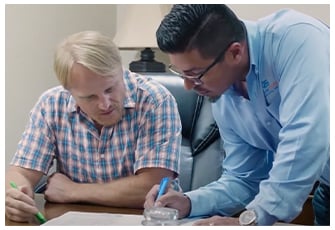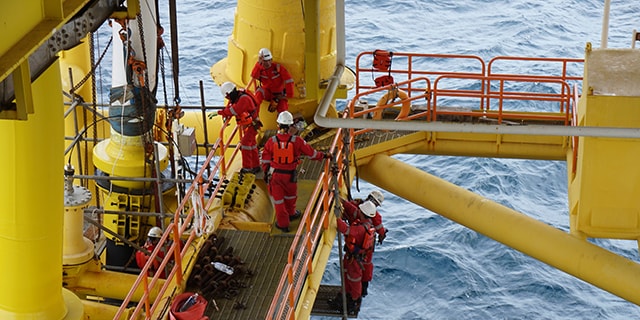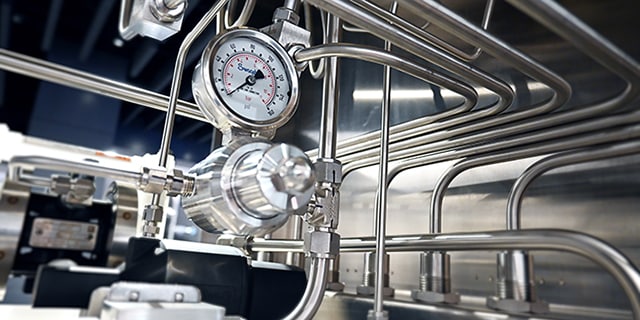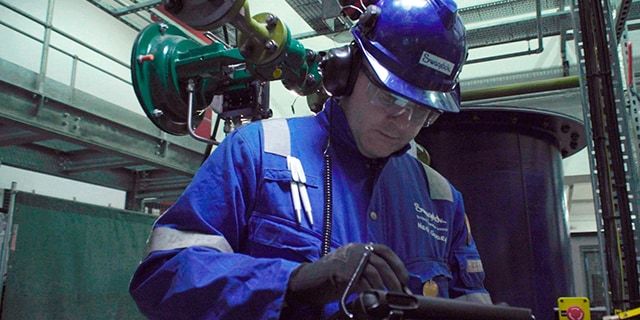Medium-Pressure Ball Valves for Hydraulic Power Units

For-Purpose Design: Ocean Edge Services Employs Decades of Field Experience to Develop HPUs for Offshore Applications


That’s why they engaged with Swagelok to supply important components that would help to improve safety, reliability, and reduce assembly time of their hydraulic power units.
 Withstanding the Pressure
Withstanding the Pressure
OES specializes in hydraulic power units that enable remote control of offshore oil and gas platform production—an application that requires extreme pressure between 20 000 to 60 000 psi to force the hydraulic actuation of equipment from the topside of oil and gas platforms to the sea floor. From the pumps creating the pressure to the connections holding the pressure, all the components need to work flawlessly to ensure the safety of operators and protection of the environment.
With safety a primary concern, Gomez and Rogers focused on the elimination of vibration, which can cause connections to wear, slip, or blow out, potentially resulting in unplanned maintenance, accidents, and even casualties. One point of interest for OES was the medium-pressure ball valve in the hydraulic power unit, and they needed to make a choice between cone and thread or compression end connections while still maintaining the level of pressure needed for the application.
Cone and thread end connections have been the standard choice for offshore applications for years but require the addition of a vibration gland to minimize vibration, installed by a knowledgeable and experienced technician, to deliver acceptable performance. Cone and thread end connections are also prone to loosen over time because of vibration, requiring manual tightening in the field to achieve a leak-tight connection.
OES saw an opportunity to improve on the design by investing in Swagelok® FKB medium-pressure ball valves with FK tube fitting end connections as an alternative. With these medium-pressure end connections, they could potentially build a safer, more reliable HPU that would require less assembly time and maintenance.
FKB series valves are available with female NPT end connections and gaugeable Swagelok® medium-pressure tube fitting end connections that reduce valve installation time and cost while providing robust tube grip and vibration resistance.
However, before they could commit, the OES team put the FKB ball valves with FK series end connections through rigorous testing.
“The action in the valve was so smooth with a 100% differential,” Gomez said. “That means one side of the valve sees all the force and the other sees zero. When the fluid comes through, it is screaming across the seal. And it held. It held with 22 000 psi, and it was rated for 15 000. We were trying to destroy it.”
In terms of vibration, the OES team was highly satisfied with the performance of the FKB series valve. According to Gomez, “You’re not going to have vibration with the FK. It actually acts as an antivibration unit. On the pressures we reach, I’m going to go FK all day long.”
 Improving Productivity and Reducing Costs
Improving Productivity and Reducing Costs
Assemblers can complete installations with FK tube fitting end connections approximately five times faster than those with cone and thread end connections, eliminating rework needs after asset delivery and significantly reducing the overall cost of maintenance. Further, they follow a simpler installation process with less opportunity for errors by technicians, leading to more consistent, reliable performance over the lifetime of the component.
According to Gomez, the time and cost savings have been significant in the assembly of their HPUs. “Prep time is 98% faster with the FK series over cone and thread,” he said.
 Gaining a Competitive Advantage
Gaining a Competitive Advantage
The relationship between OES and Swagelok has continued to grow over the years. It is a relationship built on trust and collaboration. But it all started with a product that would help the OES team achieve the performance and “for-purpose” design they set out to create. Today, OES incorporates a range of Swagelok products in its HPUs, including FKB series ball valves, FK series fittings; IPT series needle and check valves; IPT series fittings; medium- and high-pressure tubing; and cone and threading tools.
“I trust Swagelok because we both strive to produce the safest and most reliable products for our customers. You make it clear to me every day that you’re invested in my success,” Gomez said. “That’s unique in today’s world, and for OES, it’s a competitive advantage.”
Related Articles

Ensuring Reliable Deepwater Well Operations with Custom Solutions
As depths get deeper and pressures grow higher, deepwater oil wells demand the ultimate in fluid system performance. Learn why a major oil well operator has trusted Swagelok for high-quality, customized solutions since 2013.

Optimizing Medium-Pressure Oil and Gas Applications with Compression Fittings
For medium-pressure applications in oil and gas topside assets, the speed and performance benefits of compression fittings can make all the difference.

3 Reasons to Audit Your Offshore Fluid System
Evaluation and advisory services for your offshore platform can reveal hidden leaks or other potential safety and performance issues.


